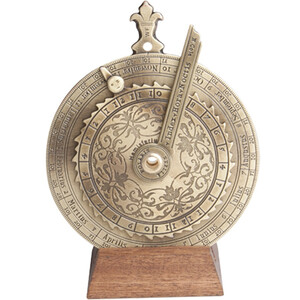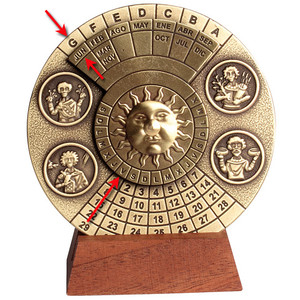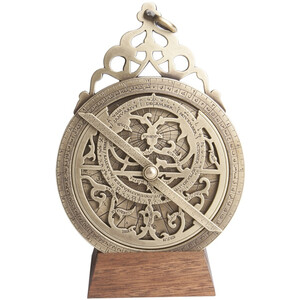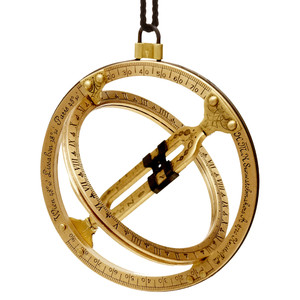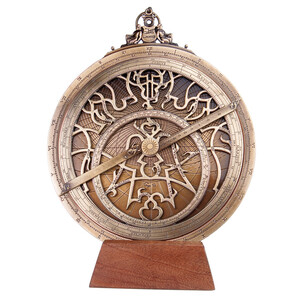This new astrolabe is made in the same way - by hand - as astrolabes were over a thousand years ago. However, the map of the sky is up to date.
An astrolabe is a very ancient astronomical computer used to solve problems regarding time (including what time it is) and for locating the positions of the Sun and the stars.
Astrolabes are used to represent the sky at a particular location and time.
This is done via a representation of the sky on the astrolabe itself.
To use an astrolabe, the moving parts are first set to a specific date and a specific time. Once set, solar system objects are represented (both visible and invisible) in their relative positions on the instrument.
A typical use of the astrolabe is the detection of the time during the day or night, determining the times of celestial phenomena - such as sunrise or sunset - and as a practical guide for calculating star positions.
The typical astrolabe was not a navigation tool however. The similarly named 'mariner's' astrolabe was used for this purpose and was widespread in the Renaissance.
The history of the astrolabe begins more than 2000 years ago.
The general principles of stereographic projection with an astrolabe have been known since 150 BC and precision astrolabes were made even before 400 AD.
The astrolabe had been highly developed in the Islamic world by around the year 800 and was subsequently introduced to Europe from Islamic Spain (Al-Andalus) early in the 12th century.
It was the most common astronomical instrument up until about 1650, when it was replaced by more precise instruments.
The map of the sky used on this astrolabe is from the 21st century.
The astrolabe is fully functional.
Attention to detail, historical interest and its beautiful design characterize this elegant astrolabe. It comes complete with a wooden base and a user manual.

